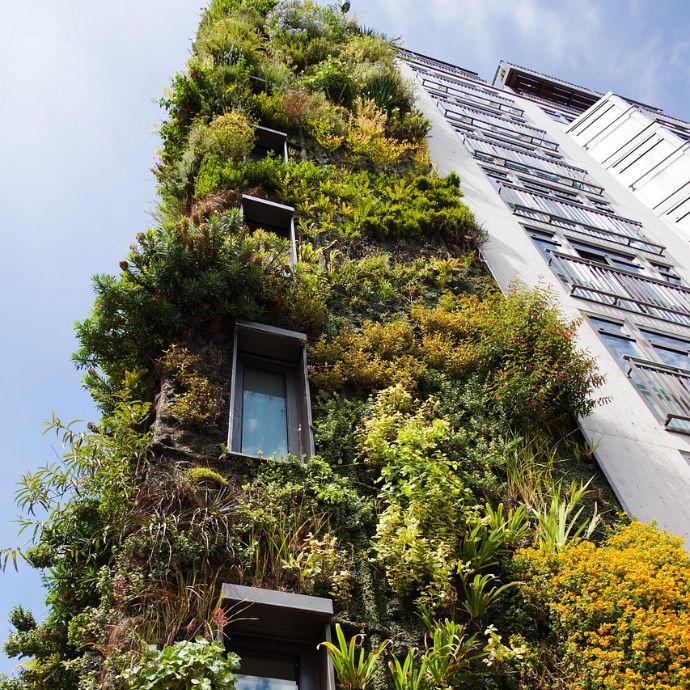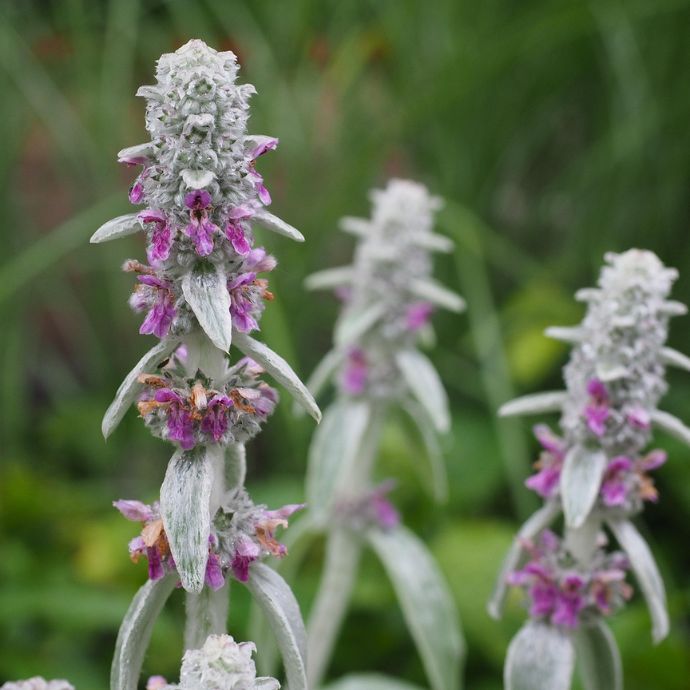Growing Sweet Potatoes: UK Beginner’s Guide

Sweet potatoes are not your traditional allotment crop, but thanks to new hardier varieties that have been specially bred to thrive in the UK climate, you can now grow your own supply. It’s well worth giving these tasty and nutritious tubers a go, especially if you have access to a greenhouse, conservatory or polytunnel. Our growers are keen to spread the word, so if you’re up for something new, here’s their complete guide to growing sweet potatoes at home.
Jump to:
- Which sweet potatoes?
- Growing from seed
- Growing from slips
- Growing from plants
- Plant care
- Harvesting
- Storing
- Problem solving
Which sweet potatoes to choose
Most sweet potatoes have rosy pink skins and orange flesh, but when you grow your own you can diversify a little, with purple or white varieties added to the mix. Make sure the variety you choose is suitable for growing in the UK (all of ours are) and if you’re planning to grow them outdoors, choose a hardier variety like Beauregard. Which is the sweetest of the sweet? Orleans just edges it on sugar content at 11%, but all of them are ideal for roasting, baking, making into fries or adding to a curry. Fun fact: they’re not even remotely related to potatoes, but are members of the Ipomoea family, which includes the flowering climber Morning Glory. The flowers are very similar!

Growing sweet potatoes from seed
I’ll be honest - our grower really doesn’t recommend this. Growing from seed is very hit and miss, but if you’re patient, up for a challenge and can find the seeds on sale, it could make an interesting project.
Plant your seeds indoors in pots of seed compost, about 6mm deep. Alternatively you can wait until the soil temperature is around 18°c and plant them directly outdoors under cloches.
Your seeds will need temperatures of around 27°C to germinate, so you’ll need to use a heat mat and cover them with a humidity dome or similar. Be patient - germination can take 2-4 weeks or even longer. Once your seedlings have two pairs of leaves and are strong enough to handle, you can pot them on or plant them outdoors under cover, making sure to harden them off first by putting them outdoors for increasing periods of time during the day, then bringing them back inside at night.
The main issue with growing from seed in the UK is of course the temperature. Sweet potatoes need a lot of warmth to grow, and as you need to wait for the soil to warm to 18°C, this doesn’t leave a long enough growing season until the temperatures drop again. If you have access to a heated greenhouse though, you may be in luck!
Growing sweet potatoes from slips
If you’re wondering what the heck a slip is, it’s just a cutting from a sweet potato plant, and one of the best ways to grow them. You can buy these online from around April.
When your sweet potato slips arrive, you’ll need to rehydrate them in a jar of water for a couple of days, then plant each one in a pot of compost with as much of the stem underground as possible, to encourage the roots to grow. Cover each pot with a plastic bag or mini cloche until they show signs of growth, then you can pot them on or plant them outside.
Growing sweet potatoes from plants
The easiest way of all is to grow your sweet potatoes from plants, and this is the method our grower recommends. It just means that the hardest part (getting the plants to germinate and develop roots) is already done and you can focus on caring for your established plant.
Our sweet potato plants arrive with you in 10cm pots so you can just place them in a warm, sunny spot and grow them on until it’s time to repot them or plant them in a bed. When repotting your plants, choose pots at least 30cm wide and deep, and use one pot for each plant, or if you’re planting in a bed, leave at least 30cm between each plant.
When can I plant sweet potatoes?
If you’re using slips, you can plant these out when the soil is at least 18°C, or around 3-4 weeks after the last frost. Our grower’s sweet potato plants are delivered to you in May, so you’ll need to keep these indoors for about a month (depending on the frost dates in your area) before planting out.
Growing under cover is a lot more reliable - you can plant your sweet potatoes into their final position at any time as long as it’s warm enough for them.
Can I grow sweet potatoes outdoors?
It’s definitely possible to grow sweet potatoes outdoors, but your crop may not be as good, and you will need to be on the ball with protecting them from the cold. In warmer regions of the UK it can be worth a punt - the trick seems to be in warming the soil first before you plant them.
Choose the sunniest, most sheltered place in your garden and prepare the ground by laying plenty of compost or well rotted manure. Then cover the ground with black polythene sheets (you can use empty compost sacks for this) and leave it to warm up.
After the last chance of frost has passed in your area, cut holes about 30cm apart in the polythene and plant a sweet potato plant in each one. To improve your odds of success even more, cover your plants with cloches or cold frames, especially overnight. If you’re growing in rows, leave 75cm between each one - those plants really do spread!
Growing sweet potatoes indoors
We’d always recommend growing sweet potatoes indoors if you can - it’s easier to give them the conditions they need and your crops will be better. A greenhouse, conservatory or polytunnel is ideal, but if you have a sunny, warm windowsill at home, this is also fine. There’s no need to pre-warm the soil like you would if you were growing outdoors, so you can plant directly into your greenhouse border or large pots. The ideal temperature for your plants is between 21-27°C.
How to grow sweet potatoes in containers
Planting sweet potatoes in pots is a great way to grow - you’ve got so much more control over their heat, light and soil conditions. Make sure your pots are at least 30cm deep and wide and have good drainage holes, then fill them with good general purpose compost and use one pot per plant.

Sweet potato plant care
What kind of soil do sweet potato plants need?
Sweet potatoes are surprisingly unfussy about their soil, so as long as you use one that’s rich in nutrients, well drained and free of clay, weeds and stones, you’ll be fine. The best type seems to be a slightly sandy, acid or neutral soil, but general purpose compost works perfectly well. For the best results, prepare the soil in spring by mixing in some well rotted manure and give your sweet potatoes a really good watering when you first plant them.
How much sun do sweet potatoes need?
As much as possible! As tropical plants, sweet potatoes need all the heat and light you can give them, so choose a warm greenhouse, conservatory or windowsill for your indoor plants, or a sheltered sunny spot outdoors (preferably south facing) where your plants will get a full six to eight hours of sunlight daily throughout the growing season.
How much water do sweet potato plants need?
Sweet potatoes are thirsty plants (must be all that heat) and need regular watering or the tubers won’t grow to the size you want them. Check your plants regularly (especially those indoors or in pots) and water deeply if the soil is dry below the surface. On hot summer days you’ll need to water every day.
How to feed sweet potato plants
You’ll get much better results if you feed your plants regularly with a low nitrogen, high potassium (or potash) fertiliser - this is especially important for plants in pots. Feed them every other week throughout the summer to help the tubers develop properly. Banana skins are also high in potassium, so cutting them up and adding them to the soil will give your plants an extra boost.
Do sweet potato plants need support?
Sweet potatoes grow on stems that can climb upwards (to about 1.5m) or trail on the ground. Growing them vertically is by far the best option if you’re limited for space, but they will need something to climb up. A trellis is a good option, or you can use a pyramid of canes like those used for climbing beans. Choose canes or sticks about 1.8m long and tie them together at the top to form a tent shape for your plant to climb up.
Alternatively, you can position your plants next to a sunny wall or fence and use vertical wires as a support. In a greenhouse you also have the option of tying them to strings hung from the roof.
How to prune sweet potato plants
You shouldn’t need to prune your sweet potato plants, but if you do find they grow especially well and sprawl out of the space you’ve put them in, you can trim some of the stems back and it won’t harm your plant.
How to harvest sweet potatoes
Your sweet potatoes will be ready to harvest about 12-16 weeks after planting. This will usually be between August and October. Watch out for the leaves turning yellow and wilting - this is your sign that they’re ready! Dig up your sweet potatoes using a garden fork or spade, and gently lift them away from the soil (their skins are quite delicate). Don’t leave it too late though, as an early frost in autumn could damage your crop in the ground.

How to store sweet potatoes
Sweet potatoes will keep for about two weeks on the kitchen counter or up to a month in a cool, dark place. It’s best to use your sweet potatoes fresh, but if you get a bumper crop, brush the soil off and cure them in a warm dark, humid place for 4-7 days (outdoors in the sun is fine) to toughen up their skins and maximise their storage life. You can also freeze them if you blanch or boil them first.

Sweet potato plant problems
You shouldn’t have too much trouble with pests and diseases when growing sweet potatoes - they’re generally very strong and resilient plants. However, anything grown under cover is at risk from greenhouse pests like red spider mites and whitefly, so it’s worth regular checks. If your plant’s leaves start drooping and turning yellow, appear mottled or covered in cobwebs, you might have to take action.
Whitefly
Whiteflies look like small white moths and are most commonly found on the underside of leaves. If left to their own malign devices they will feed on the leaves, damaging them and turning them yellow. Your best defence against whitefly is to simply spray your plant down with some water or a mix of water, vegetable oil and soap, aiming it at the whiteflies to try and wash them off. Make sure you check the whole plant and get as many of the fiends off as possible.
You can also plant companion plants such as marigolds near your cucumbers. Marigolds deter whitefly as well as attracting ladybirds and hoverflies which will come and feast on the pests.
Red spider mites
Red spider mites are tiny (about 1mm) red beasties that are often a problem in greenhouses.
If left unchecked they can cover entire leaves in their webs while sucking the sap from them, causing yellowing leaves, leaf drop and sometimes the death of the plant.
To prevent the red menace infesting your sweet potato plant, mist the leaves daily - they don’t like that. You can also use biological control against red spider mites, by introducing predator mites such as Phytoseiulus persimilis. These can be bought online and are a natural way to control pests.
Last updated: 14/03/2024















